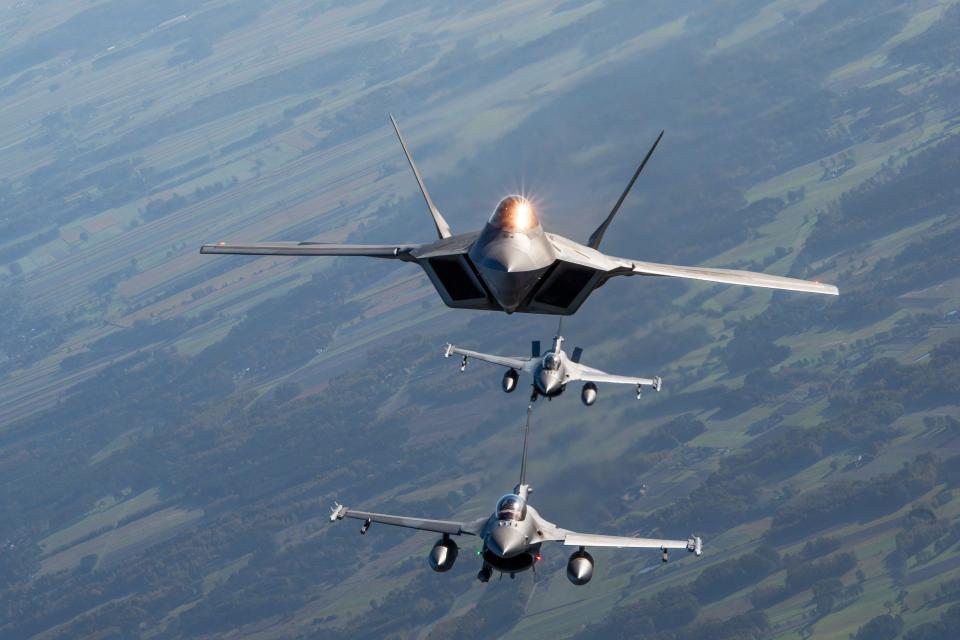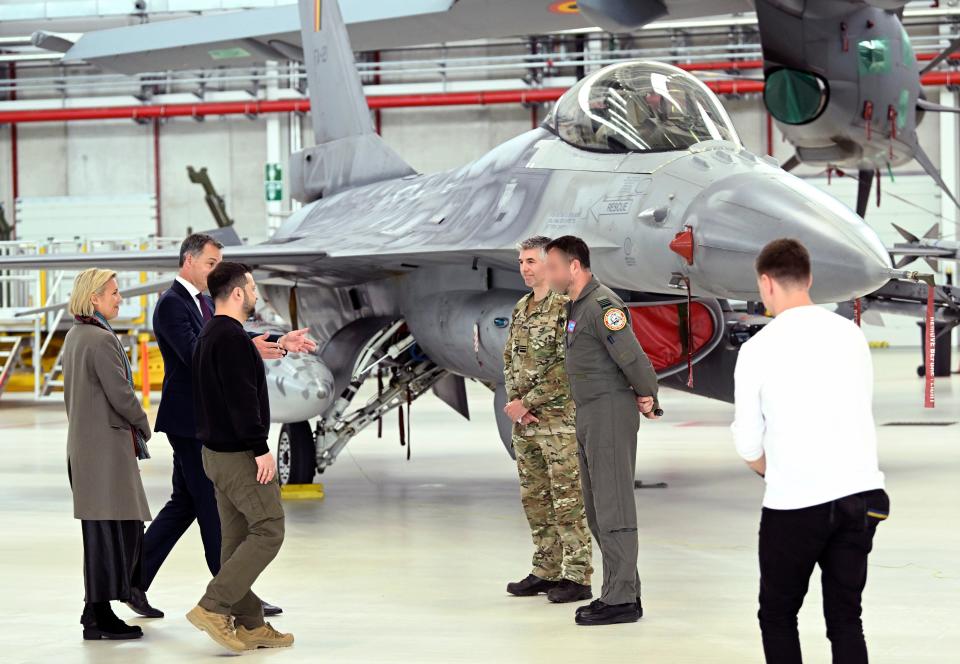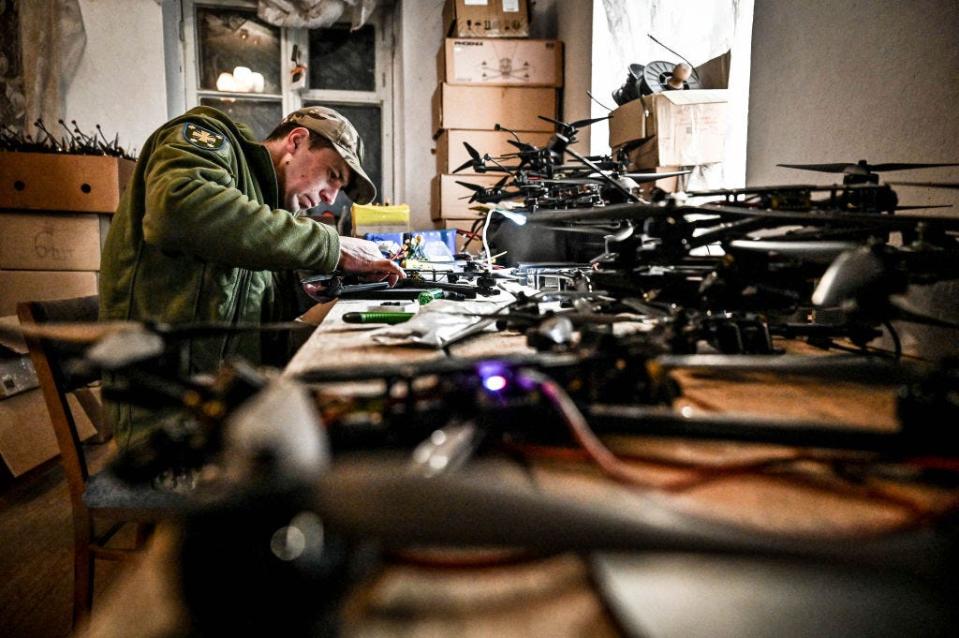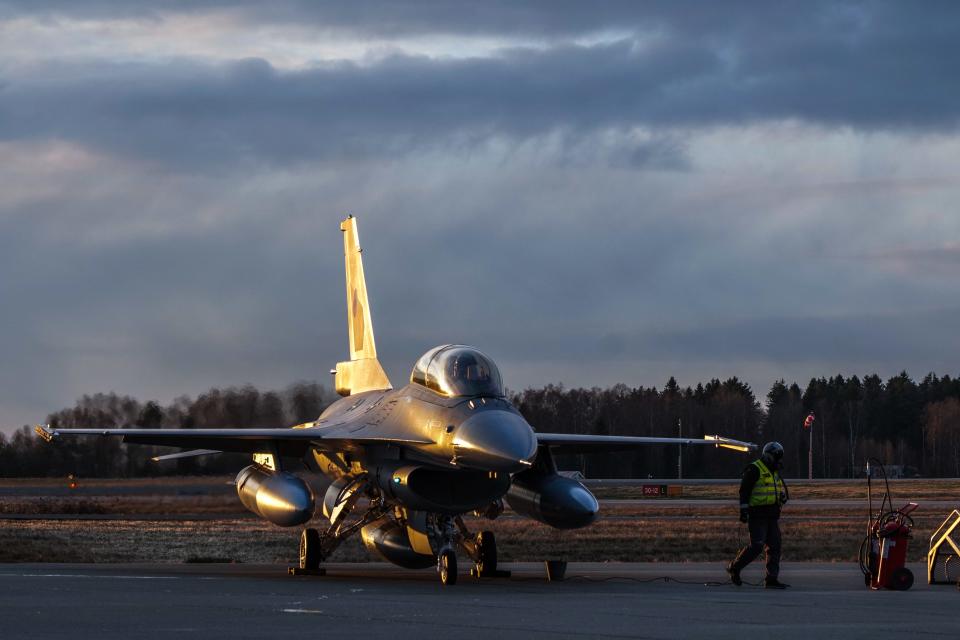How airpower experts think Ukraine could pull off bursts of air superiority to get F-16s into the fight and score breakthroughs
F-16 fighter jets are about to finally enter combat in Ukraine, where its new operators will have to figure out how best to use them.
There is a play in which Ukraine could pursue bursts of air superiority to score breakthroughs, experts say.
The integrated air-ground campaign could give Ukraine what it needs to break through Russian defenses.
Ukraine will soon receive F-16s, combat-proven Western fighter jets able to augment the war-torn country's depleted force of aging Soviet-era aircraft.
A key question is how Ukraine should "optimize the use of the relatively small number of F-16s" it is set to receive and the limited availability of trained pilots, airpower experts say.
Ukraine, they write, could leverage its new fighter jets as part of an integrated air-ground campaign to secure brief, localized air superiority as part of a larger operation to secure breakthroughs in specific areas.
Ret. US Air Force Lt. Gen. David Deptula, now the dean of the Mitchell Institute, and Christopher Bowie, nonresident fellow for the Center for Strategic and Budgetary Assessments, wrote in a new Mitchell Institute report that "by conducting an integrated air-ground campaign to secure air superiority in the times and places of its choosing, Ukraine can further its military's momentum on the battlefield and begin reversing the territorial gains the Russian army has achieved up to this point."
Air superiority refers to the condition in which one side can conduct operations in pursuit of its objective without prohibitive interference from the enemy.

Neither Ukraine nor Russia have gained widespread or significant air superiority thus far in the war, though Russia appeared to establish temporary, localized control of the skies around Avdiivka in February. That limited support helped the Russian troops overwhelm Ukrainian defenses and capture the war-torn area.
Deptula and Bowie's new report highlights the "absolute necessity of air superiority to achieve a decisive advantage" in the war, noting that without such an advantage, the conflict looks as it does now — a "relative stalemate" resembling World War I trench warfare.
When Ukraine begins receiving F-16 jets from Western partners, it will need to rethink the use of its air force and how to support ground operations.
The effectiveness of Ukraine's new F-16 force will depend heavily on how many jets its receives, the armaments, the type of jet sent, the total number and proficiency of trained pilots, and the maintenance operations for the planes. Survivability and application will factor in as well.

Mixing capabilities for a breakthrough
"The first step," the authors wrote in their report, "is to work with the Ukrainian army to determine, across the entire Ukrainian line of engagement with the Russians, the optimal location (potentially multiple locations) and times to gain air superiority."
Next, the Ukrainian Air Force would need to work with ground forces on a massive deception plan, placing troops on various axes of the battlefield in order to confuse Russia about where the true location of a major attack is.
Such a move could give Ukraine at least some element of surprise, something it largely lacked in its failed 2023 counteroffensive.
Then Ukraine could aim to hinder the Russian response, employing "hundreds, preferably thousands" of drones against a variety of targets, such as energy production and storage, Deptula and Bowie said, further confusing Russian troops and forcing the expenditure of interceptor missiles.

Along with unmanned systems, Ukraine's ground forces could use long-range fires, such as US-provided HIMARS and ATACMS, against Russia's radars, surface-to-air missile systems, and artillery. The air force could support these operations using HARM missiles.
Important to this operation would likely be partner-provided intelligence, which would help Ukraine improve the quality, timing, and effectiveness of the attack. Extensive electronic warfare to jam Russian reconnaissance and surveillance capabilities is also important to further disrupt a response.
As Ukraine's ground began their advance, Ukraine would need to move long-range SAMs to engage and deter Russian fighter jets. This sets up Ukraine's air force to gain air superiority over specific areas, allowing their pilots to strike Russian units, logistics, and transportation networks and deny movements of reinforcements.
All of this requires a truly integrated approach, Deptula and Bowie wrote. While there are a host of potential challenges, such as insufficient resources and training, the results could be promising, giving Ukraine bursts of air superiority in certain areas that can be exploited for breakthroughs in a way that could "lead to a collapse of Russian positions."

Questions have long been raised about how Ukraine could best use its F-16s, with some concern that the jets could be less useful now than they would've been earlier in the war.
The effort to get Ukraine F-16s from NATO members has faced a variety of problems, with some Western leaders hesitant to provide jets due to fears of Russian escalation, but the alliance began to budge on the idea last year.
F-16s, fourth-generation fighters that have been used to fly many different missions over the decades, from air-to-air combat to air defense suppression and destruction, will be a capability upgrade for Ukraine, potentially offering them systems and weapons they didn't previously have and giving them a boost in critical offensive and defensive action.
But the Fighting Falcons, 50-year-old aircraft, are in no way a silver bullet. They'll face a range of challenges in Ukraine, especially Russia's advanced air defense systems.
And there may be other issues as well. Ukraine has also faced issues adapting to Western ways of war, specifically complex, combined arms warfare. That's been a challenge as it's sought to be more in line with NATO's fighting style and embrace the assistance and guidance of its Western supporters, though some of that guidance has at times been inconsistent with the realities of the battlefield in Ukraine.
Read the original article on Business Insider

